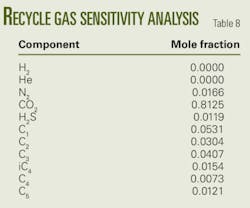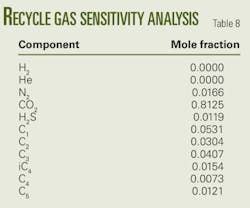A long surge in the costs of building and operating oil and gas production facilities has reversed course, according to two proprietary indexes. Also, design and construction costs of refineries and petrochemical projects declined during the past 6 months after a long increase.
The IHS Cambridge Energy Research Associates (IHS CERA) Upstream Capital Costs Index, which uses 2000 as a baseline with a value of 100, fell 8.5% to 210 during the 6 months between the third quarter of 2008 and first quarter of 2009 (Fig. 1). The index tracks costs of building oil and gas facilities.
Also, the IHS CERA Upstream Operating Costs Index, with the same baseline for operating costs, fell 8% to an index value of 187 (Fig. 2).
Separately, the proprietary IHS CERA Downstream Capital Costs Index, which uses 2000 as a base year, fell 9% to 170 in the 6 months ending in first-quarter 2009 from its level of the prior 6 months (Fig. 3).
Upstream costs
"The first signs of a downward shift in [upstream] costs were evident in a moderation that we observed in the last 2 months of the third quarter," said IHS CERA Chairman Daniel Yergin.
The dip in capital costs reflects cuts in upstream activity and a decline in the cost of steel and subsea equipment, IHS CERA said.
Upstream steel costs fell 25.2% in the latest 6 months after rising by 32% in the prior 6-month period.
Operating costs fell because of "a slackening of project activity and lower levels of resource utilization," IHS CERA said.
Some of the largest cost declines were in transportation and consumables, reflecting falling energy prices and the slumping global economy. Costs of well services also dropped.
Costs of offshore operations didn't fall as much as those for onshore work—6% vs. 15%—between third-quarter 2008 and first-quarter 2009.
In that period, operating and capital costs didn't fall as much as crude oil prices did, IHS CERA noted. A reason is the tendency of some costs, such as those for personnel and deepwater vessels, to resist downward pressure.
IHS CERA expects upstream capital and operating costs to continue falling because of further declines in materials costs and slackening demand.
The firm's Upstream Capital Costs Index covers equipment, facilities, materials, and skilled and unskilled personnel used in construction of a geographically diverse group of 28 onshore, offshore, pipeline, and LNG projects.
The Upstream Operating Costs Index measures cost changes in oil and gas field operations.
Downstream costs
In the 6 months ending in the third quarter of 2008, downstream costs were up 6% from the previous period.
The recent move lowered costs to levels last experienced in late 2007.
"The downward pressures that began to materialize at the end of third-quarter 2008 have now taken hold on the cost of construction materials," said Daniel Yergin, chairman of IHS CERA. "At the same time, slowing demand for both energy-related and general construction projects has slackened demand, causing a further loosening of the construction market costs."
IHS CERA cited a sharp decline in steel costs and the drop in crude oil prices. It said steel costs fell by more than 25% in the past 6 months.
Projects under construction are proceeding, but drops in demand and prices for petrochemicals and refinery products jeopardize future downstream projects.
"We have seen a notable drop in new refinery project starts as companies react to low margins at a time of high costs and declining product demand," said Jackie Forrest, lead researcher for downstream cost index. "Due to the long time horizon associated with downstream projects, the slowdown in new project starts will lead to slower demand in the next few years for downstream construction markets."
Forrest said equipment prices are starting to weaken, but "falling commodity prices have not yet flowed through the entire supply chain to allow for more significant price reductions." All regions tracked by the index showed cost decreases over the past 6 months, IHS CERA said. Among the largest dips were those of Russia, 17%, and South America, 16%.
A strengthening US dollar lowered costs in many regions, Forrest said. For example, the value of the Russian ruble against the dollar reduced costs of labor in Russia by more than 25%.
The index tracks the costs of equipment, facilities, materials, and skilled and unskilled personnel used in the construction of more than 30 refinery and petrochemical projects in many regions.

